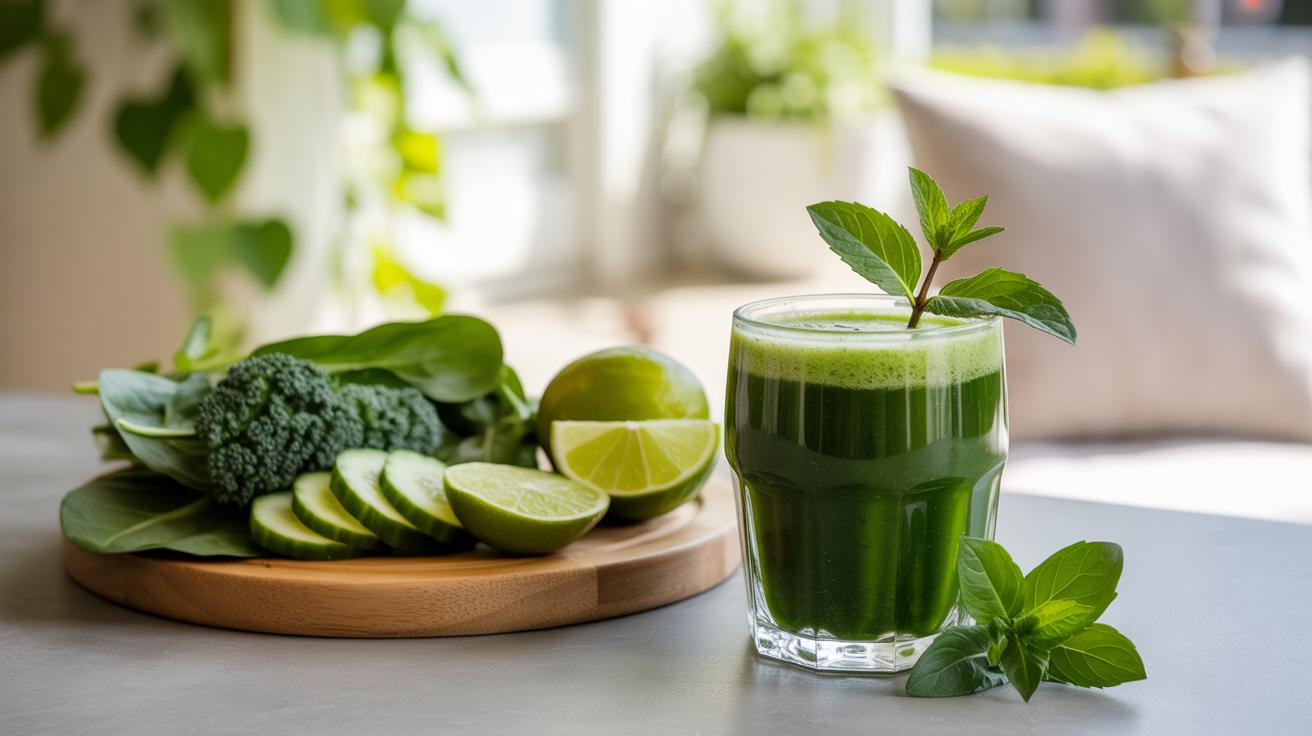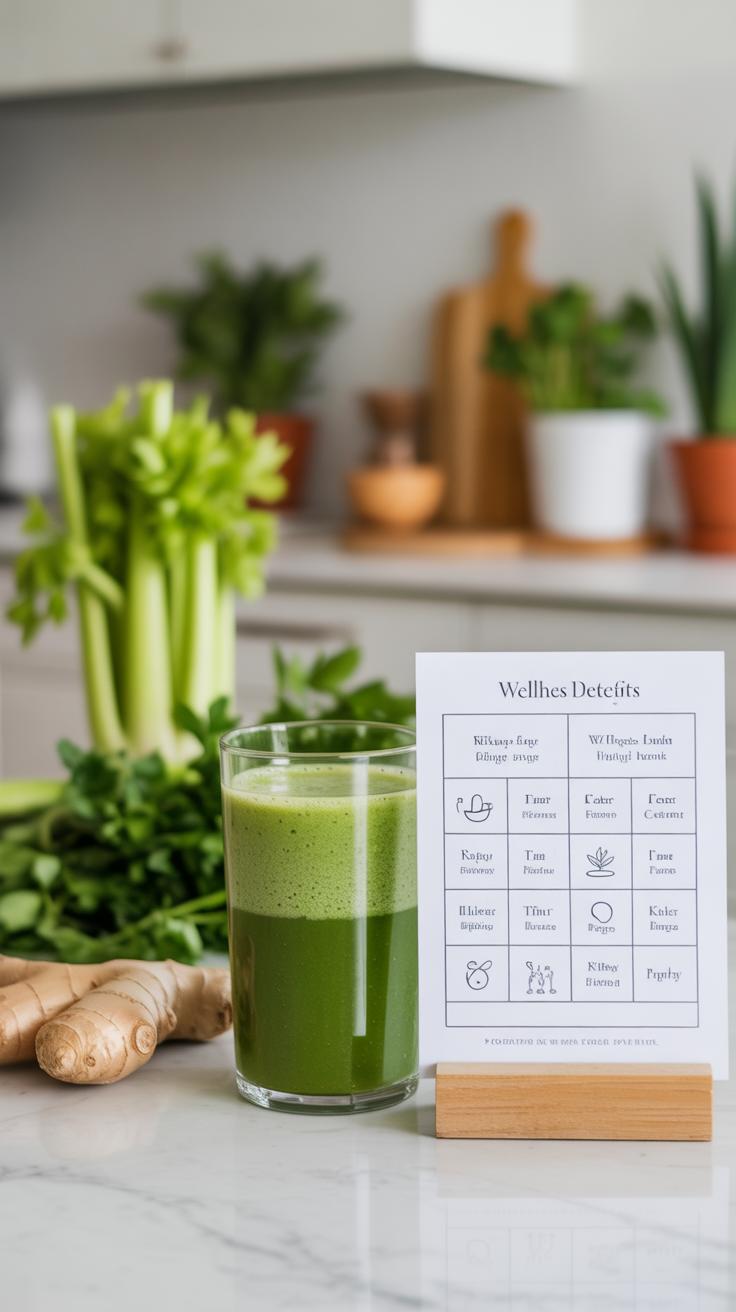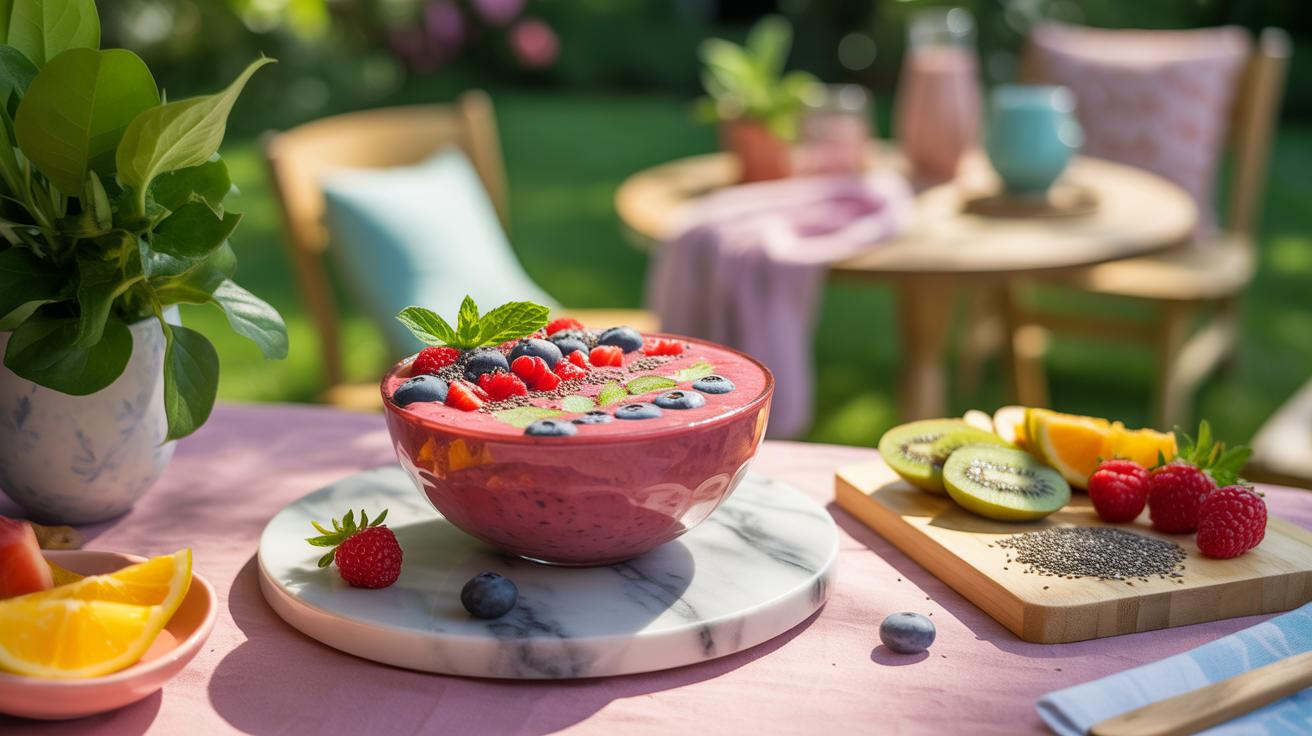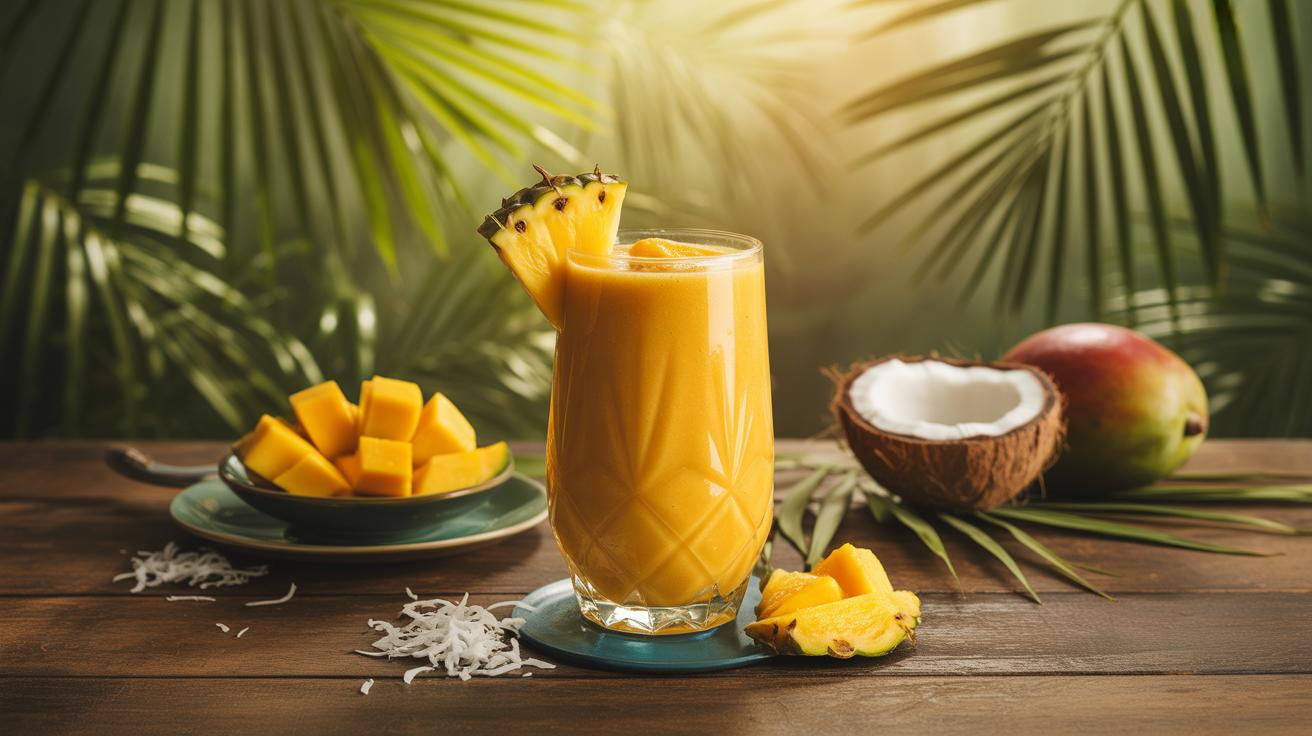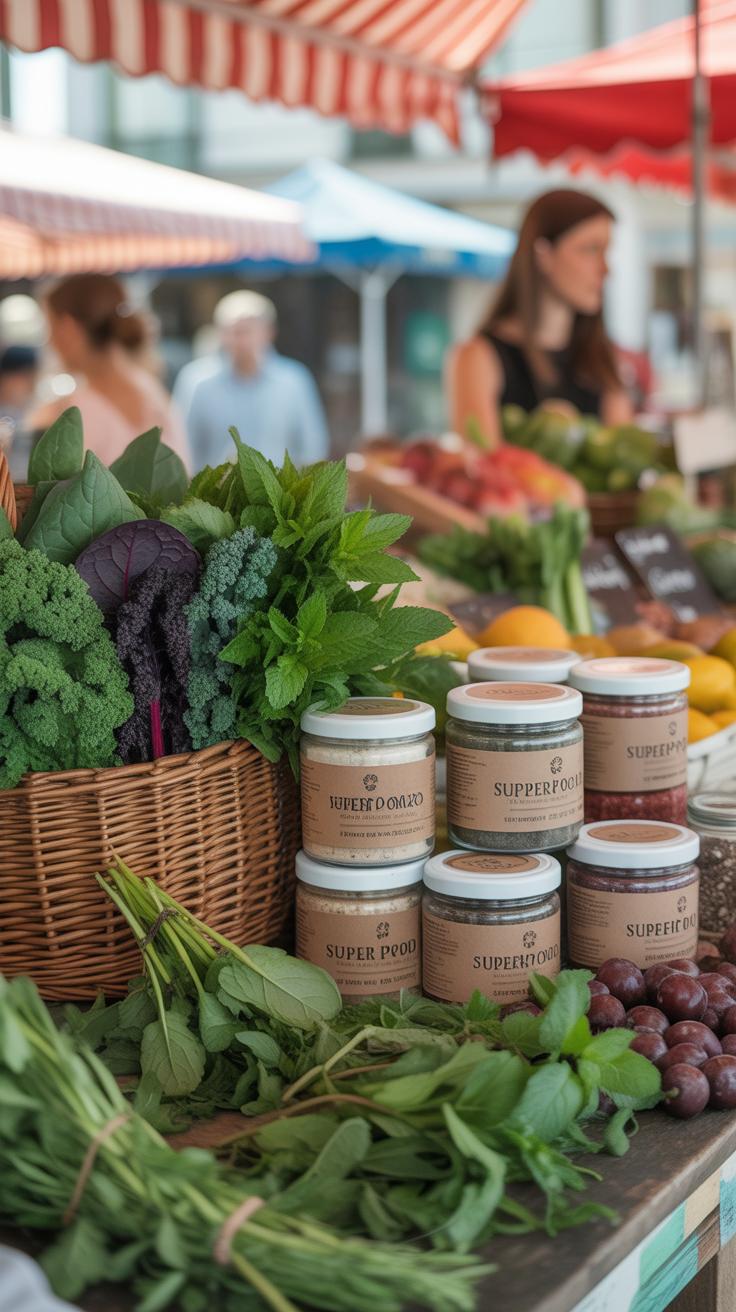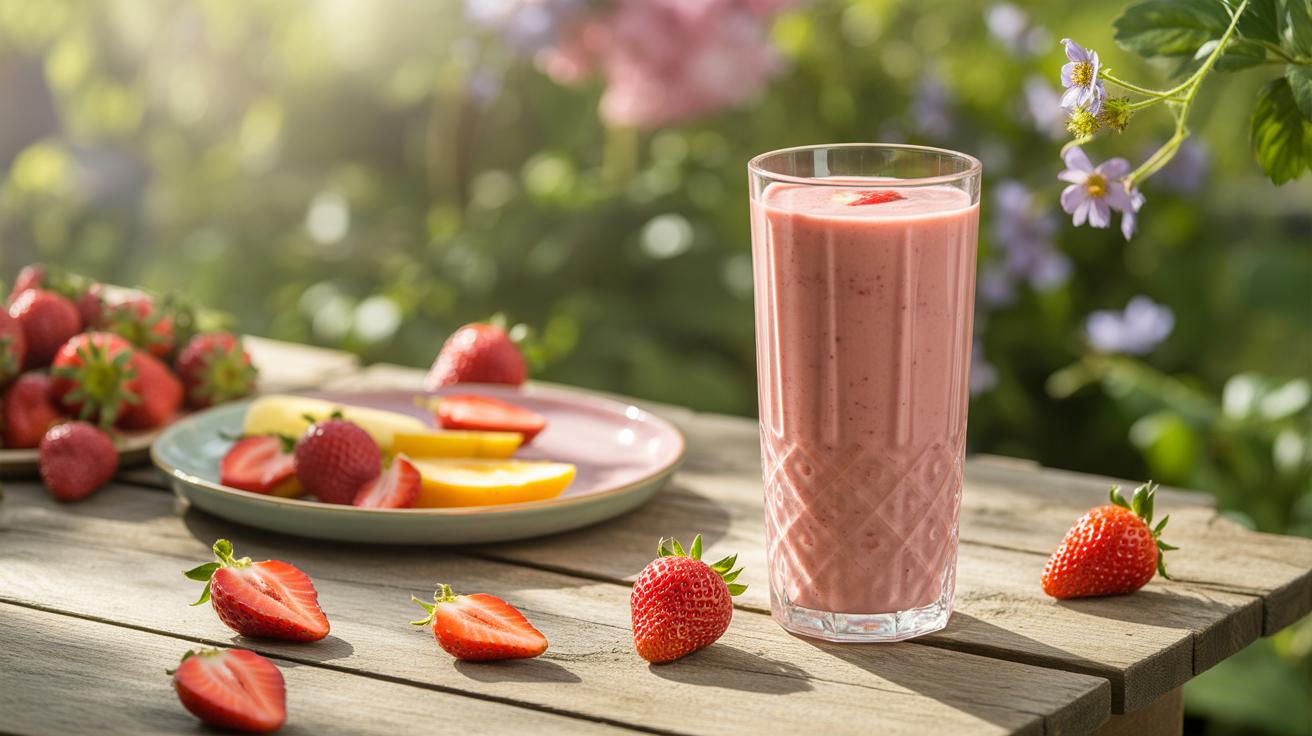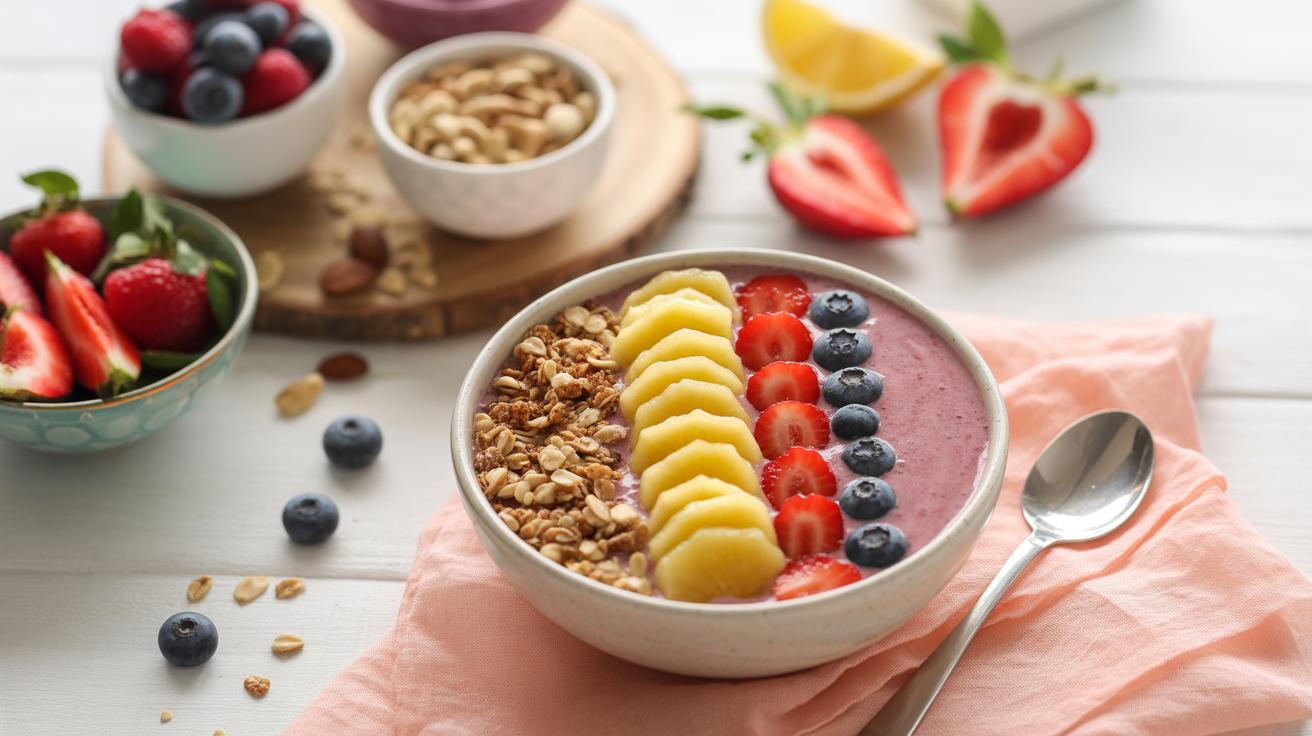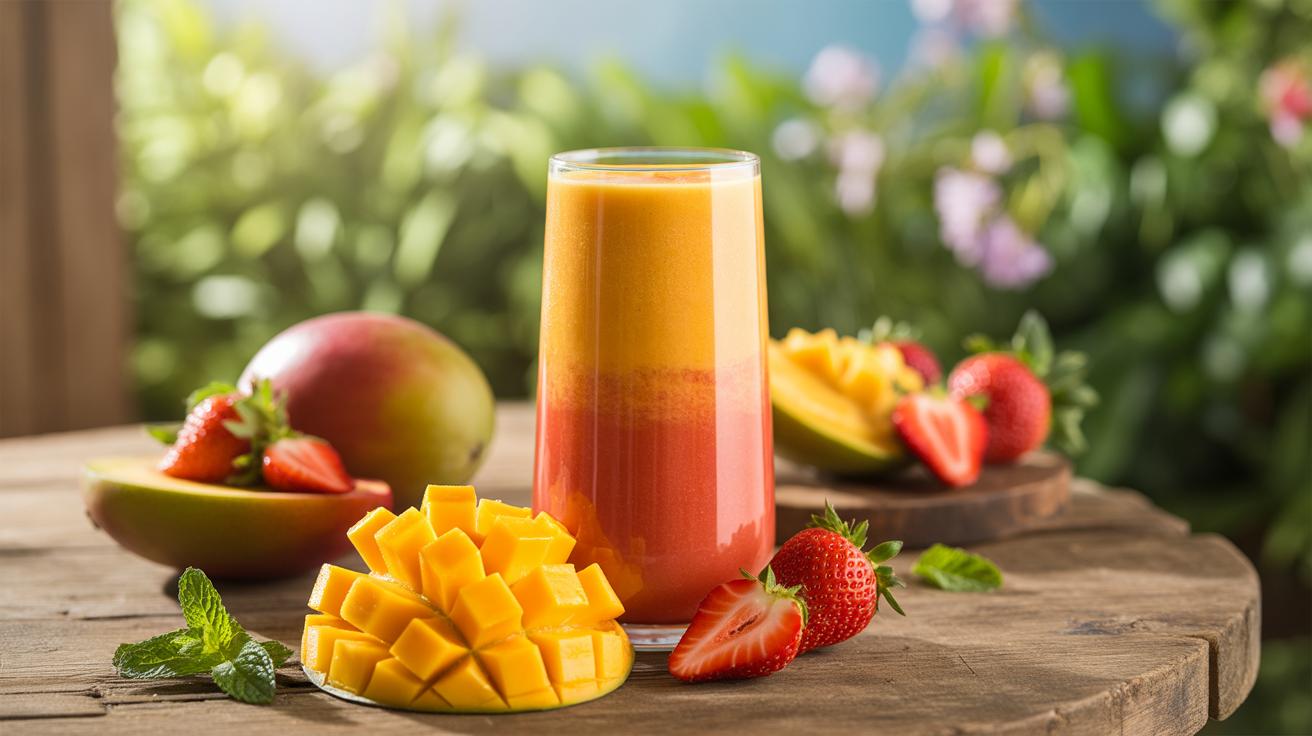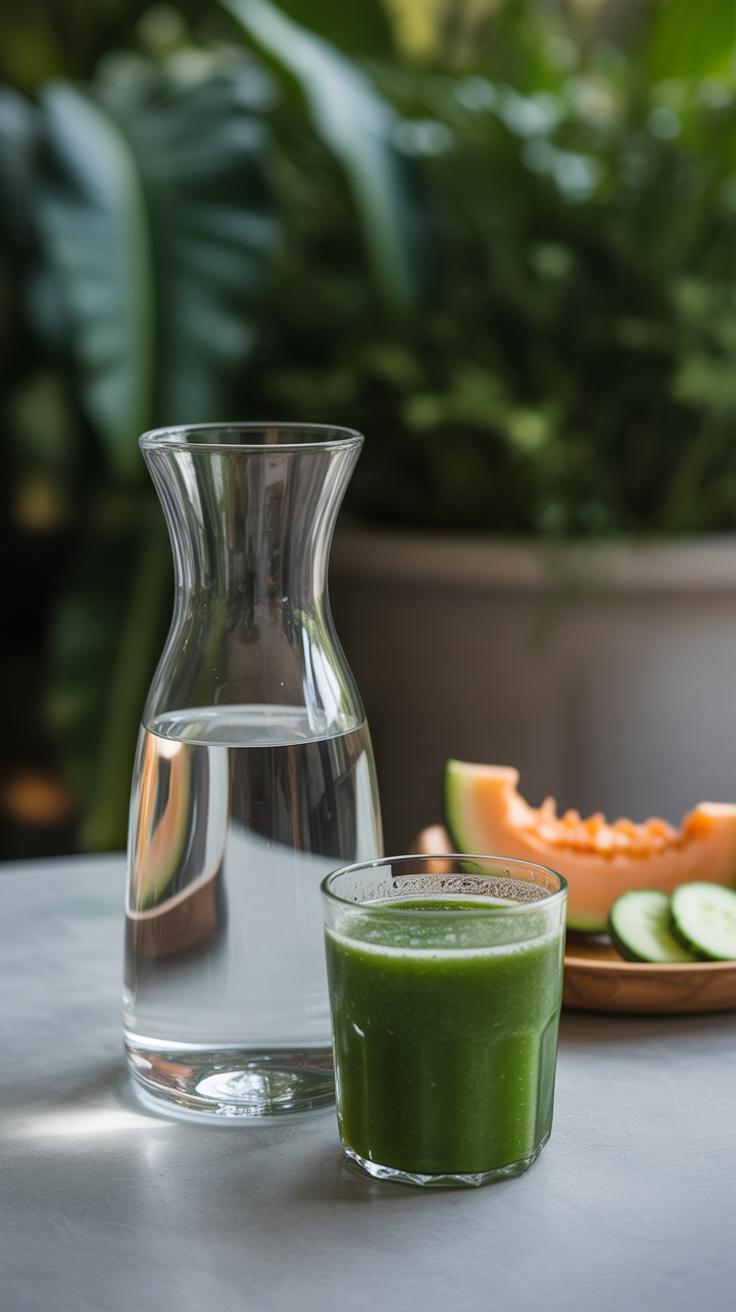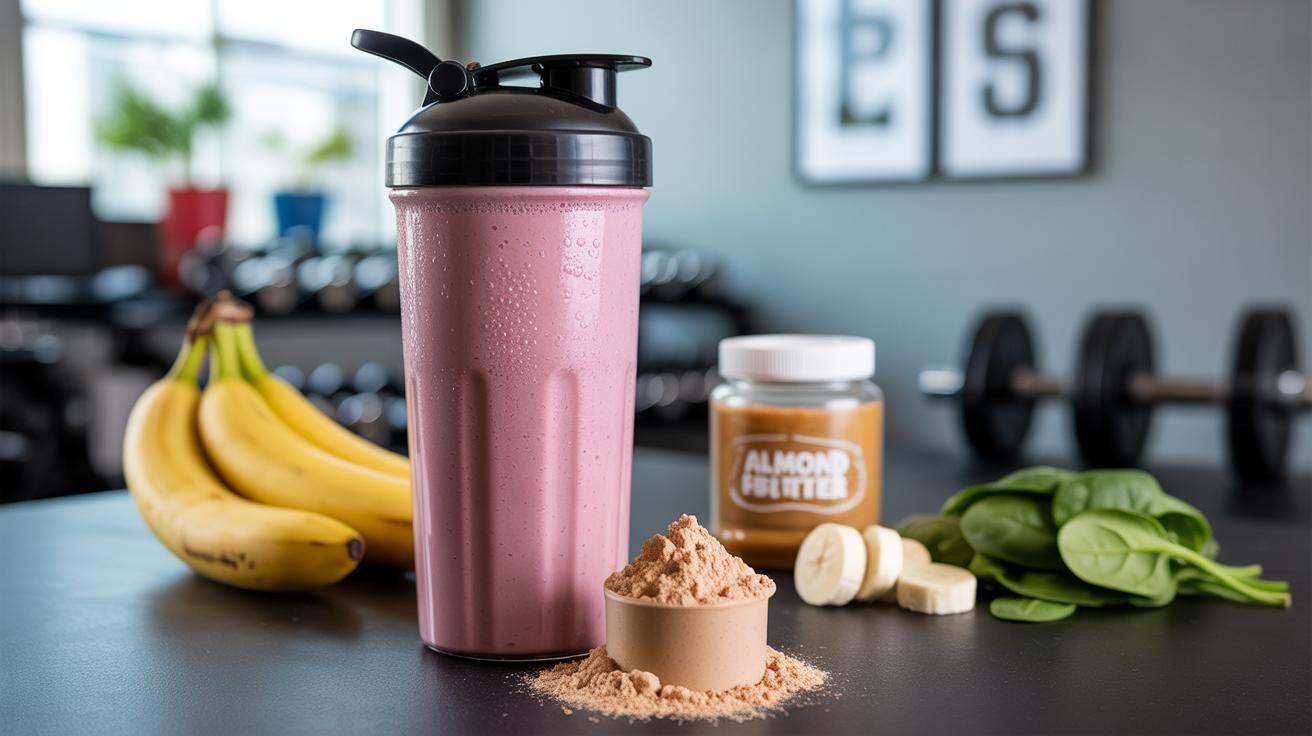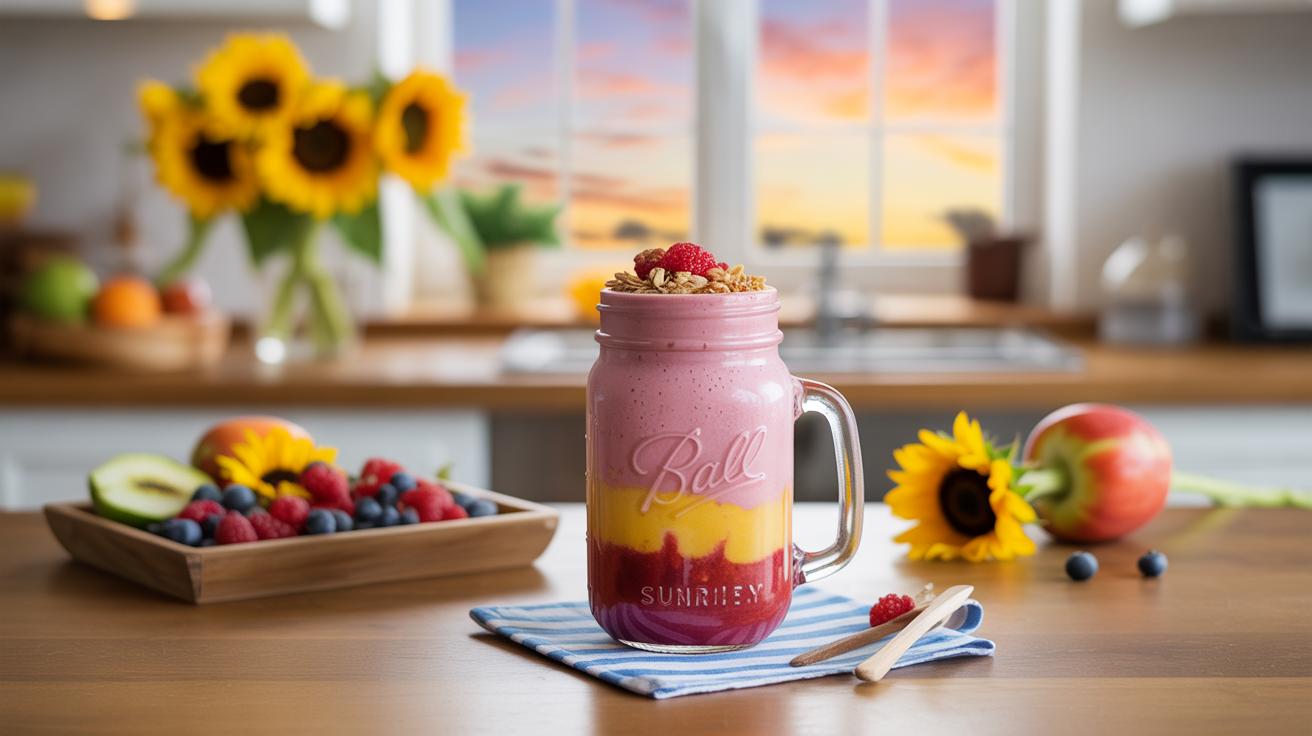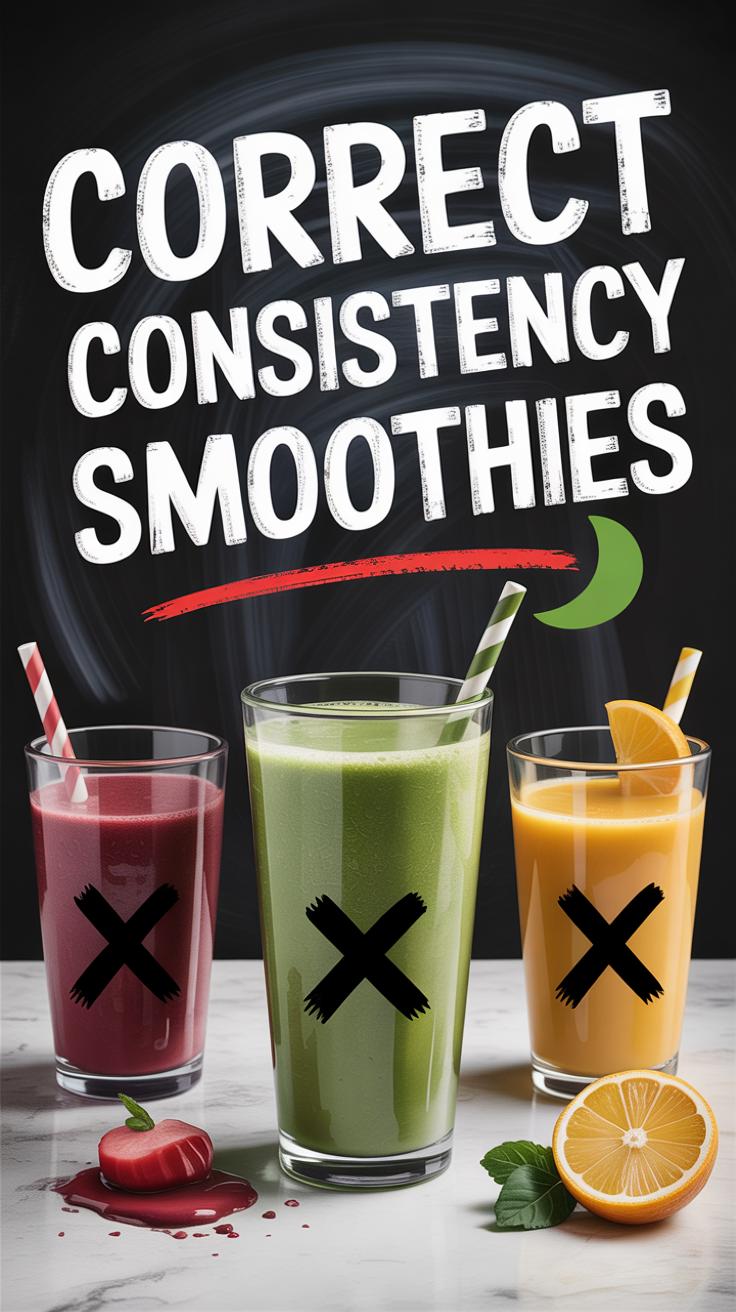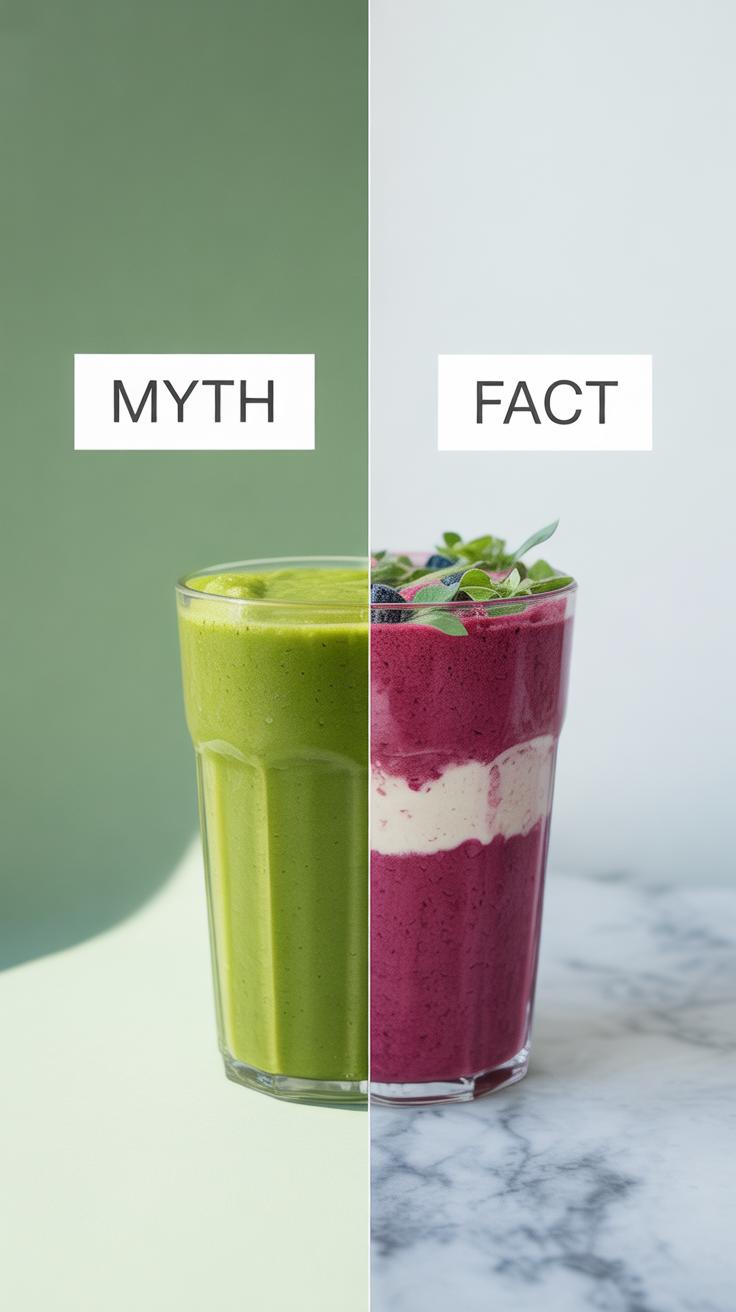Introduction
Green smoothies mix fruits and leafy green vegetables into a tasty drink that helps cleanse your body. They offer a fresh way to get important nutrients every day. By using simple ingredients, you can create drinks that support your health and keep you feeling good.
Making green smoothies at home is easy and fun. This article explores different recipes, the benefits of key ingredients, and how to prepare your green smoothies. You will find practical tips to enjoy these drinks daily and feel energized.
Benefits Of Green Smoothies For Detox
Green smoothies offer more than just a fresh taste—they provide your body with a gentle yet effective way to detoxify. Many common ingredients like spinach, kale, and cucumber contain vitamins A, C, and K, along with minerals such as magnesium and potassium. These nutrients help support liver function and encourage the flushing out of toxins.
The antioxidants present in green smoothie components play a role in neutralizing harmful free radicals in your body. Perhaps you’ve noticed feeling lighter or more energized after regular green smoothie intake—that’s likely due to this cleansing effect working slowly over time. While it’s not a magic cure, it does feel like a small reset for your system.
These vitamins and minerals don’t just detoxify; they support immune health and promote clearer skin, which can sometimes reflect how well your body filters out impurities. So, drinking green smoothies might give you more than just nutrition—it could be a simple daily detox ritual you end up appreciating.
Key Nutrients In Green Smoothies
Green smoothies pack a well-rounded mix of nutrients from both fruits and vegetables. Leafy greens like kale and spinach supply vitamin K and iron, essential for blood health and oxygen transport. Fruits such as green apples or kiwi add vitamin C, which helps the body absorb iron better and boosts your immune defenses.
Fiber is a cornerstone of detox—you get this from both fruits and vegetables. Fiber binds with waste in the digestive tract and eases its removal. Meanwhile, chlorophyll, the natural green pigment found in many smoothie greens, may support cleansing by helping carry oxygen through your bloodstream, though its effects are subtle and often overlooked.
Magnesium and potassium regulate fluid balance and nerve signals, which can sometimes get out of sync during detox phases. Including sources rich in these minerals might calm digestion and reduce cramps you didn’t even realize you were getting.
How Green Smoothies Aid Digestion
One of the most immediate changes you might notice with green smoothies is improved digestion. Thanks to the ample fiber content, these drinks can promote smoother bowel movements and reduce bloating. Since the ingredients are blended, they’re easier on your digestive system than eating whole raw greens.
Hydration also plays a subtle but crucial role—many smoothie bases include water, coconut water, or almond milk, which contribute fluids that support kidney function and toxin elimination. Staying hydrated aids digestion by softening stool and helping your intestines work steadily.
At times, I’ve wondered if all that fiber might be too much, but finding a balance with smoothies that combine solid greens and juicy fruits made a difference. You might find your digestion more regular, less sluggish. Still, it’s a process, and your body’s response can vary day to day.
Choosing The Right Ingredients For Green Smoothies
Picking the right ingredients for your green smoothie can feel like a small science experiment. It’s not just about tossing any greens or fruits you find. You want to focus on freshness and nutrition, but taste matters too—sometimes more than you might think. Starting with leafy greens, the classics like spinach, kale, and Swiss chard are popular choices. Spinach is mild and blends smoothly, which makes it easy to sneak in without overwhelming other flavors. Kale is tougher, with a slightly bitter edge, but packs a punch of vitamins A, C, and K, along with fiber. Swiss chard has a distinct, earthier flavor and offers a good dose of magnesium and antioxidants.
When pairing fruits with greens, think about balancing bitterness with sweetness. Bananas add creaminess and a natural sweetness that can soften the taste of stronger greens. Apples bring a crisp, fresh flavor and a bit of tartness, while pineapple gives a tropical zing and a boost of vitamin C. You might wonder if berries work too—they do, but they can change the color and slightly alter the flavor profile. It’s okay to experiment. Sometimes a less common fruit can surprise you.
Besides greens and fruits, adding seeds or nuts can round out your smoothie with healthy fats and protein. Chia seeds, flaxseeds, or a handful of almonds can improve texture and help you feel fuller. They also contribute to your daily omega-3 intake, which most people don’t get enough of. You might think adding extras complicates things, but often it’s about what makes the smoothie enjoyable enough to keep drinking every day. What ingredients do you find yourself reaching for repeatedly—it’s a little personal, isn’t it?
Simple Green Smoothie Recipes To Start With
Classic Spinach and Banana Smoothie
This one’s a reliable favorite, especially if you’re new to green smoothies. Grab a handful of fresh spinach—about one cup—then add a ripe banana. The banana softens the earthy flavor of spinach, making it easier to enjoy if you’re not used to leafy greens. Pour in about one cup of water or your favorite plant milk, then toss everything into a blender.
Blend on high for about 30 to 45 seconds. You want it silky smooth, but sometimes a few tiny bits of spinach don’t bother me. If you prefer it extra creamy, throw in a few ice cubes or a spoonful of yogurt. It’s surprisingly satisfying and stays simple, but still packs a good bit of nutrition.
Quick tips: wash the spinach thoroughly before blending. Also, peel the banana for the smoothest texture. Don’t rush—sometimes blending a bit longer helps get rid of leafy chunks you might not enjoy.
Kale Pineapple Green Smoothie
Kale and pineapple make an interesting pair. Kale is tougher, both in texture and taste, yet pineapple adds a bright sweetness that balances the slight bitterness. Try starting with one cup of chopped kale—remove thick stems for easier blending—and one cup of fresh or frozen pineapple chunks.
Add half a cup of water or coconut water to keep it light. Blend until smooth, about 45 seconds or so. You might notice a little fiber from kale, which I think adds character, but if that’s not your thing, blend longer or add a bit more liquid.
This smoothie feels like a good middle ground: not too sweet, yet not overwhelmingly green. It also packs vitamin C and antioxidants—pineapple helps with digestion too, so it’s a bit of a digestive aid.
One thing to try: if it’s too thick, a splash more water helps. And sometimes I throw in a few mint leaves to mix things up. You might find it makes a surprisingly fresh difference.
Advanced Green Smoothie Recipes With Added Boosters
When you’re ready to move beyond the basics, adding certain boosters can really turn a simple green smoothie into a nutritional powerhouse. Think of protein powders, chia seeds, and flaxseeds—they blend in well and ramp up the health benefits, especially for detoxing and sustaining energy throughout the day.
Protein powder not only helps keep you full longer but also supports muscle repair, which is handy if you’re active. You can go for plant-based options like pea or hemp protein to keep it light and vegan-friendly. Just a scoop stirred into your favorite green mix usually does the trick without overwhelming flavor.
Seeds like chia and flax bring fiber and omega-3s, which many of us lack. Toss in a tablespoon before blending. They absorb liquid and thicken the smoothie, making it more satisfying—almost like a light meal. Plus, that fiber gently sweeps toxins from your system.
Herbs and spices contribute more than taste. Ginger adds a sharp zing and aids digestion. Mint refreshes and soothes the stomach, while turmeric offers anti-inflammatory benefits that some people find really helpful during detox days. Try adding a small knob of ginger or half a teaspoon of turmeric powder; these little tweaks wake up your senses and enhance the cleansing effect.
Have you noticed how a pinch of spice can completely change the smoothie experience? It’s almost like that extra layer of complexity invites you to sip slower, enjoy more, and maybe even feel better afterward.
How To Prepare Your Green Smoothie For Maximum Nutrition
Blending Tips For Smooth Texture
Getting a smooth green smoothie isn’t just about tossing everything into a blender. It’s more about the order and the way you blend. Start by adding your liquids first—this helps the blades move freely without getting stuck on thick chunks. Then, add softer ingredients like spinach or cucumber, followed by harder items such as kale stems or frozen fruit. That layering can really make a difference.
Try blending on a low speed initially, then ramp it up to high. This avoids large bits and gives you a creamier texture. Sometimes, I’ve found pulsing a few times before blending fully breaks down stubborn leafy bits better, leaving behind fewer irritating lumps. Also, cutting ingredients into smaller pieces beforehand helps. Blenders vary, so experiment a bit—some can pulverize everything, others need a little extra patience.
Timing And Storage Advice
Drinking your green smoothie soon after making it preserves most of the nutrients and flavor. That said, life isn’t always that straightforward. If you need to prepare ahead, store the smoothie in an airtight container filled to the brim to limit oxygen exposure. A glass jar with a tight lid works well. Keep it in the fridge for up to 24 hours, although the longer it sits, the more nutrients like vitamin C may degrade slightly.
Some argue for freezing leftovers, but I think freezing can affect texture and some nutrient qualities. If you freeze, thaw gently in the fridge instead of using heat, which might destroy beneficial enzymes. As for timing, many swear by having green smoothies first thing in the morning. It’s a fresh start and may boost your energy. But honestly, anytime feels okay if it fits your routine—you just want to avoid letting it sit too long after blending.
The Role Of Hydration In Green Smoothies
When you blend your green smoothie, the choice of liquid base does more than just thin the mix. It’s really about hydration—and how well your body can use those fluids to flush out toxins. Water is the simplest choice, pure and effective. It keeps things light and fresh without adding any flavors that might compete with your greens. But sometimes it feels too plain, right? That’s when coconut water steps in. It not only hydrates but adds a touch of natural sweetness and electrolytes, which can boost your energy and keep you feeling refreshed longer.
Plant-based milks—like almond, oat, or soy—introduce creaminess. They make the smoothie more filling, but some can mask the green flavors a bit or make the drink heavier, which might slow hydration for some people. So, which one you pick depends on what you want from your smoothie that day. Do you want it light and quick to sip, or richer and more substantial?
Hydration directly affects how your body detoxifies. Water supports the kidneys and liver—your main detox organs—to flush waste efficiently. Drinking a smoothie that combines fiber from greens and proper hydration helps move toxins out faster. It’s interesting how much timing and liquid choice can change the overall detox effect. Have you noticed how sometimes a smoothie leaves you feeling energized and clear, and other times, a bit sluggish? Maybe the difference lies in that liquid base more than you realized.
Incorporating Green Smoothies Into Your Daily Routine
Morning Smoothie Habits
Starting your day with a green smoothie can be surprisingly helpful for setting a healthy tone. Mornings tend to be when your body craves light, nutrient-rich options after the overnight fast. A green smoothie can gently wake up your digestion without overwhelming your system, unlike a heavy breakfast might.
Think about it: a blend of leafy greens, fruits, and a proper liquid base creates a fast, easy-to-digest meal. You don’t need to be a morning person either—just blend, sip, and go. Some find sipping a green smoothie first thing prevents those mid-morning energy crashes that sneak up later. Though honestly, it might not cure everyone’s caffeine need, it does pair well with a cup of tea if you want.
If mornings feel rushed, prepping ingredients the night before helps speed things up. Freezing chopped spinach or kale, cutting fruits in advance, or even pre-measuring powders can make mornings less daunting. You may even find that these small tweaks make the routine feel less like a chore and more like a simple self-care moment.
Using Smoothies As Meal Replacements
Using green smoothies as meal replacements isn’t about skipping meals randomly; it’s more about having a nutrient-dense option when time or appetite doesn’t align with a full meal. Smoothies work better as replacements for breakfast or lunch because they’re lighter yet still filling, though you want to avoid relying on them for dinner all the time. Your body might crave more solid foods later in the day.
To make a smoothie a true meal substitute, include a balance of protein, healthy fats, and fiber alongside the greens and fruits. Ingredients like Greek yogurt, nut butters, chia seeds, or hemp protein can help with that. Also, keeping an eye on portion sizes matters—too small, and you’ll be hungry soon; too large, and it might slow you down.
Many people find themselves wondering if they’ll feel satisfied or if the smoothie really counts as “a meal.” Experiment and listen to your body. Some days, it’s perfect; others, you might need a handful of nuts afterward. Over time, you’ll learn when to lean in and when to pair your smoothie with something else. The key is consistency, not perfection.
Common Mistakes To Avoid When Making Green Smoothies
One common misstep is piling in too many sugary ingredients. People often think more sweetness means better taste, but that can overpower the greens and add unnecessary calories. Instead of tossing in handfuls of honey or syrup, consider natural options like ripe bananas or a few dates. They bring sweetness, but also fiber and nutrients that won’t spike your blood sugar sharply.
Another issue is using low-quality or old produce. Greens that are wilted or past their prime lose flavor and nutrients. Freshness really matters here—not just for taste, but for the health benefits you expect. When I started paying more attention to what I bought and when I used it, the smoothies tasted notably better. Crisp and fresh leaves create a smoother, cleaner drink.
Balancing sweetness without climbing onto the sugar bandwagon means experimenting with natural enhancers:
- Try blending in citrus like lemon or lime juice to brighten flavors.
- Adding a bit of apple or pear can sweeten without extra sugar.
- Spices such as cinnamon or ginger can give a subtle kick that reduces the need for sugar.
You don’t have to sacrifice flavor to keep things healthy. It’s about mixing and matching what’s in your kitchen and trusting your palate. Sometimes a little less sweet is actually better—why not try it?
How To Customize Green Smoothies To Your Taste And Needs
One of the best things about green smoothies is how easily you can make them your own. Maybe you prefer something sweeter or thicker, or you’re aiming for a smoothie that supports weight loss, energy, or better digestion. Whatever your goal, tweaking ingredients helps you get closer to what works for you—no need to stick to strict recipes.
Adjusting For Sweetness And Texture
If your smoothie tastes too bitter or grassy, try adding more fruits like banana, pineapple, or apple. They naturally boost sweetness without extra sugar. On the other hand, if it’s too sweet, cut back on fruits and increase leafy greens or cucumber. For texture, thicker smoothies come from ingredients like avocado, frozen fruit, or even a spoonful of nut butter. Water, coconut water, or ice can thin things out when it feels too dense. Experiment a bit until you hit a balance that’s just right for your palate.
Adding Supplements For Specific Goals
Sometimes, plain greens and fruits won’t cover all your health targets. This is where supplements can come in handy. Maybe you need more protein—consider adding a scoop of plant-based or whey protein powder. If you’re after antioxidants, spirulina, chlorella, or matcha could give you a boost. For gut health, a spoon of flaxseeds or probiotics might be worthwhile. Vitamins like C or D, or magnesium powder, also fit well, especially if your diet lacks those nutrients. The key is to pick what feels right for your body and your day, then fine-tune from there.
Green Smoothie Myths And Facts
Debunking Detox Myths
Many people think green smoothies can “cleanse” their bodies or flush out toxins instantly. The truth is, your liver and kidneys handle detox naturally every day. Drinking green smoothies supports those organs with nutrients, but they don’t act as some magic detox potion. It’s a gradual process—no quick fix.
Some claims promise weight loss or miracle cures from simply adding greens to your blender. Those promises overlook how complex health and digestion really are. Green smoothies can boost your nutrient intake and hydration, but they’re not substitutes for balanced meals or medical care.
Understanding Nutritional Facts
Green smoothies can pack a lot of vitamins, minerals, and fiber, especially if you use leafy greens like spinach or kale. They’re a convenient way to get more produce in your diet. But they also vary a lot in calories and sugar, depending on what fruits and extras you add.
You might assume all green smoothies are low-calorie—yet a smoothie with bananas, mango, and nut butter can be quite filling and energy-dense. So, they can fit into a balanced diet as snacks or meal replacements, but it helps to watch portions and ingredient choices.
Ultimately, green smoothies are tools. Used thoughtfully, they can increase your nutrient intake and enjoyment of healthy foods. But they don’t replace the variety and complexity of whole foods or the need to listen to your body’s needs.
Conclusions
Green smoothies provide a natural way to add fruits and vegetables to your diet while supporting body detox. The recipes shared show you how simple ingredients can make tasty and nourishing drinks. You can create your own mixes based on what you like and what is available.
Try including green smoothies in your daily routine. You will benefit from their vitamins and minerals and enjoy a refreshing drink that supports your health. Your body will thank you for the extra care and nutrients.

